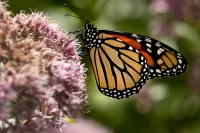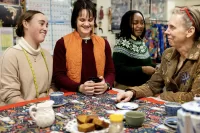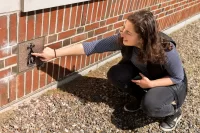
Amelia Hawkins ’24 of Sun Valley, Idaho, wants her Bates classmates to graduate with a sense of hope, especially since many of their high school graduations four years ago were drive-by events (if that), and their first year at Bates was under COVID protocols that made spending time together tough.
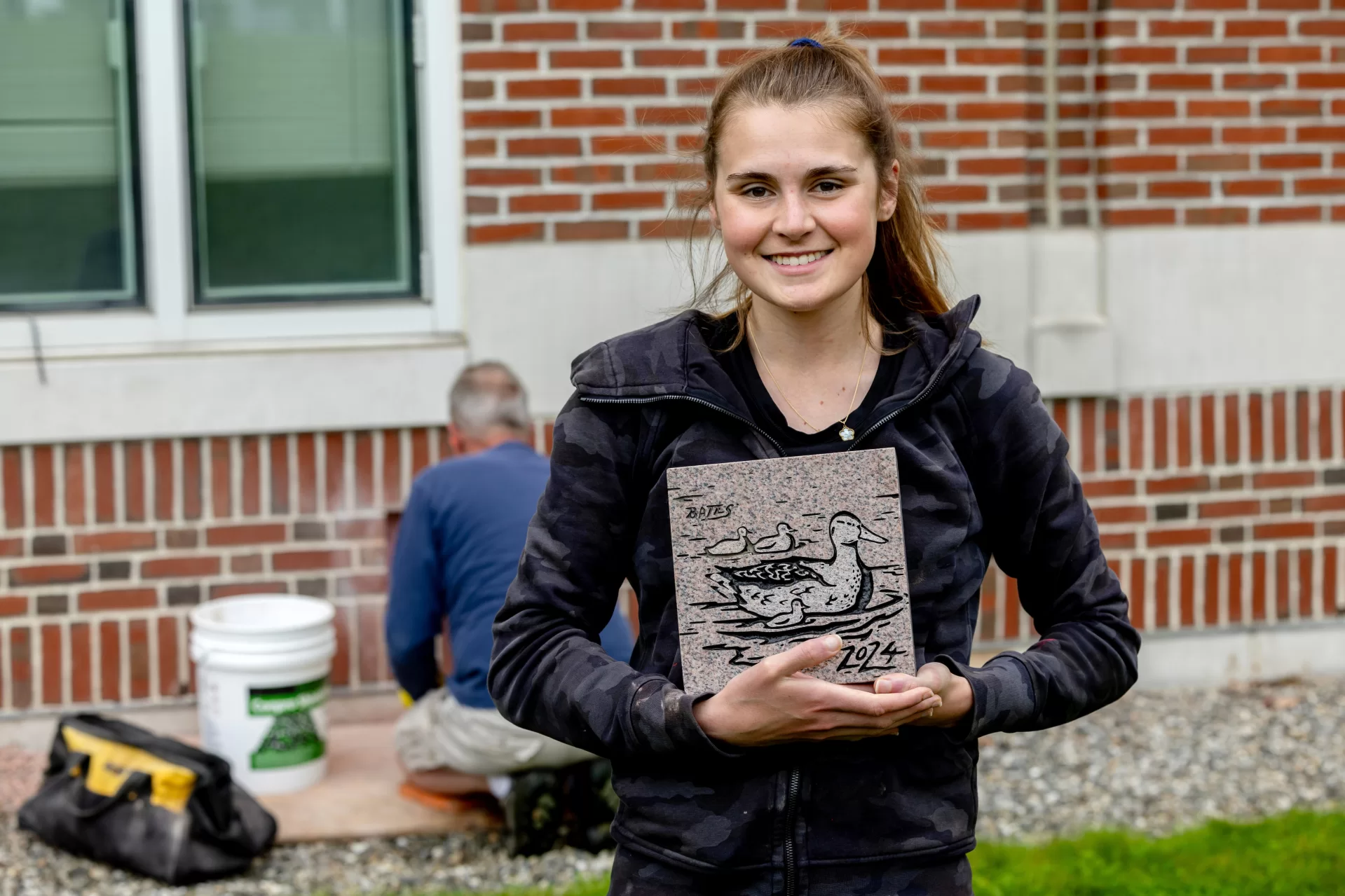
So Hawkins, a Bates studio arts major, created a design for their traditional ivy stone that everyone can rally around: the ducks at Lake Andrews.
Hawkins also added ducklings, to symbolize hope and promise. Then she finished off her sketch with the class year — 2024 — fashioned into ripples floating away from the duck’s paddling webbed feet, as if sending reverberations of her positive message into the future.
“I have always been in love with the ivy stones around campus and the different designs and how they’ve changed over time,” said Hawkins. “Some have buildings, and those are cool, but I wanted to do something new that I hadn’t seen — yet also something everyone sees. I immediately thought of the ducks at the Puddle.”
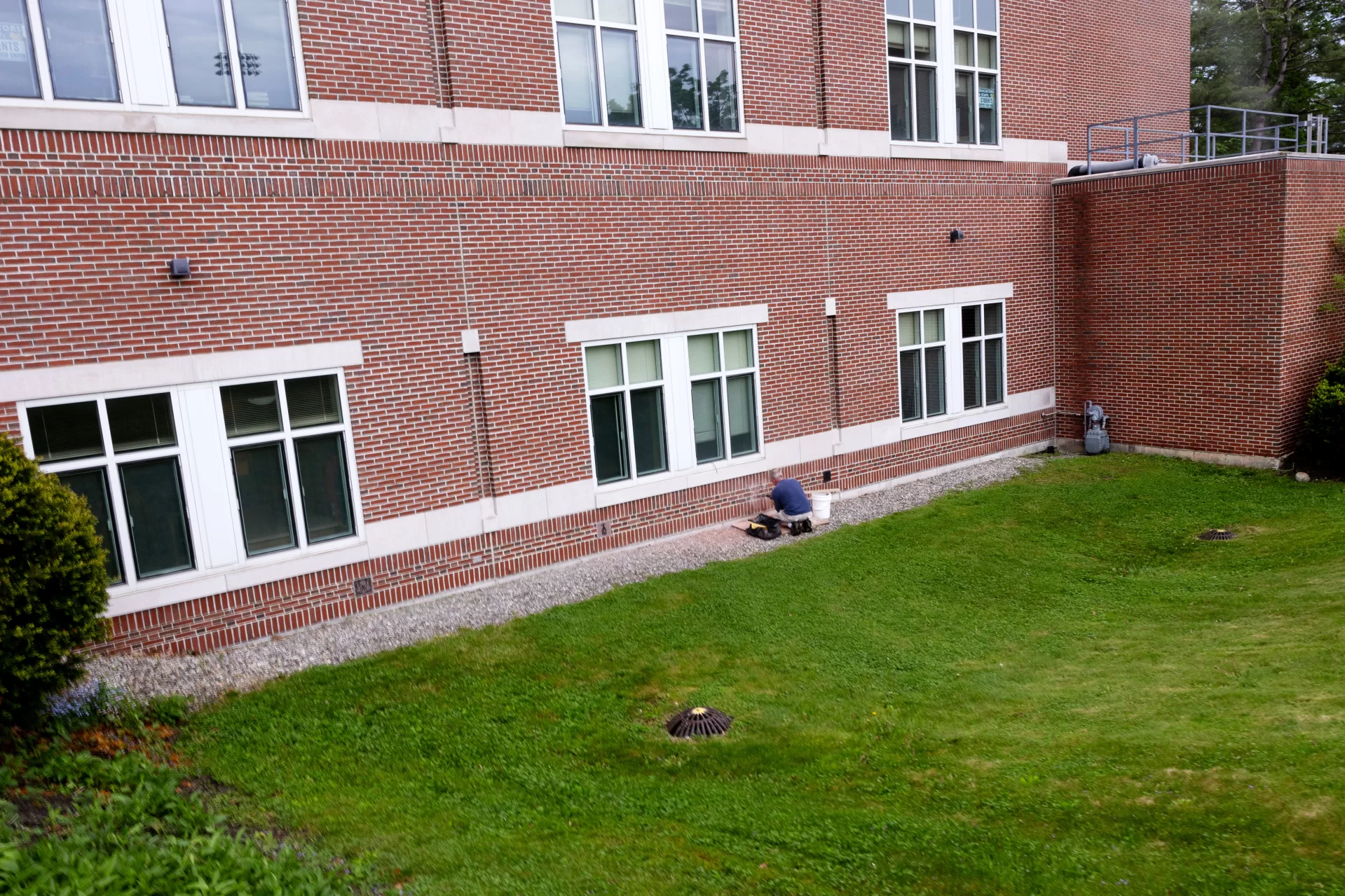
Around 7:30 on Wednesday morning, Ron Tardif, a Bates mason with Facility Services, began his work installing the stone, first by drilling a square hole in the brick. Soon, Hawkins arrived. Despite having been up very late the night before with her friends — it being Senior Week and all — she wanted to see the installation.
Tardif appreciated the senior’s pluck and gumption. “She’s definitely mason material!” he boomed.
A mason of 35 years, Tardif not only loves the art of masonry, but also teaching others his craft. So Tardif encouraged Hawkins to help out. At first reluctant, she soon crouched down and helped plaster the interior sides of the empty hole with mortar.
“People will see me doing something and come over and start asking questions. The best way to answer is: ‘Here, try it,’” Tardif said.
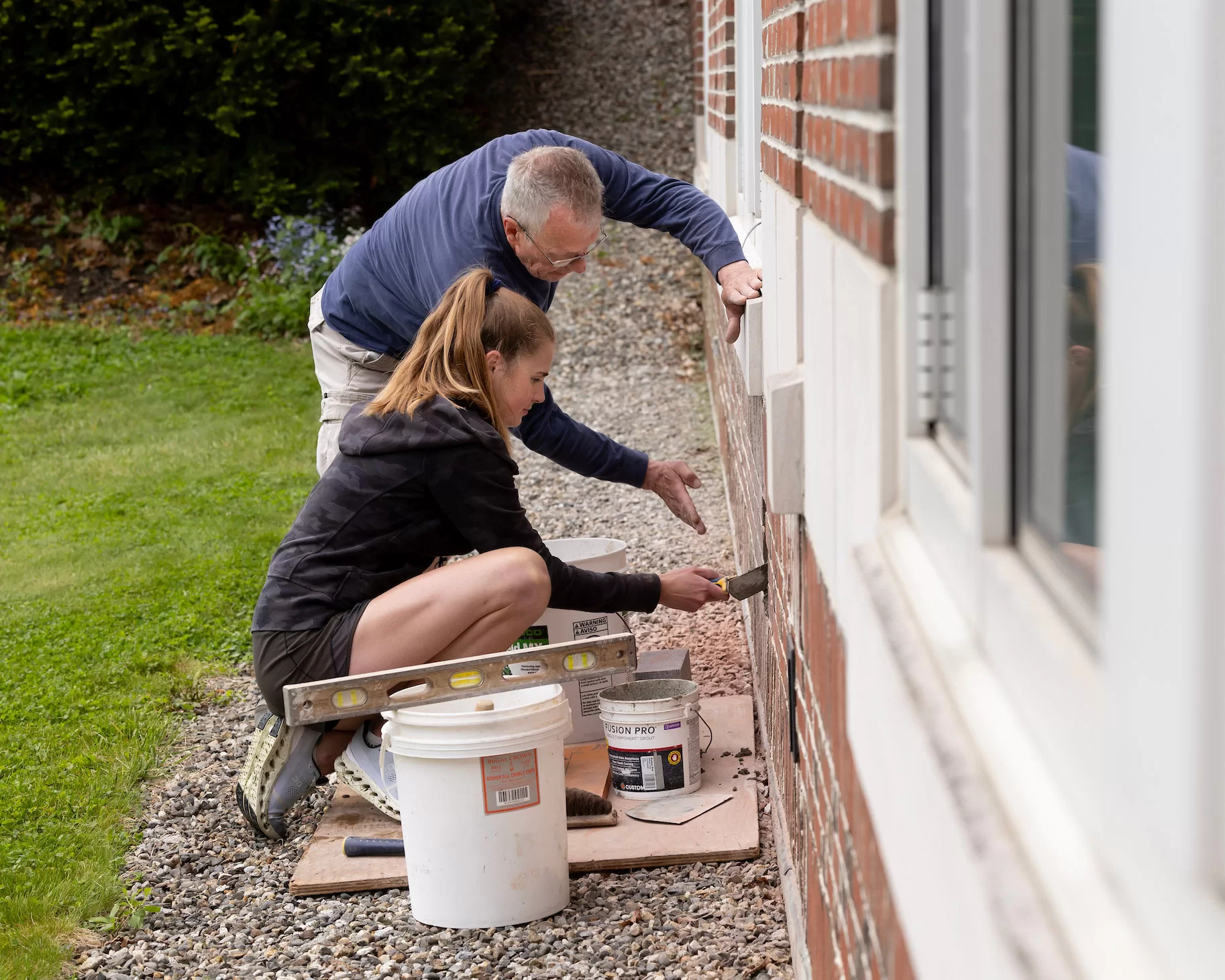
The ivy stone tradition at Bates dates to 1878, when the juniors of the Class of 1879 installed their class stone on Hathorn Hall and planted a sprig of ivy below it. (Back then, ivy stones were installed in the junior year. And now, ivy is no longer planted.)
Not surprising, ivy motifs as well as depictions of Hathorn Hall and its bell tower have been popular subjects through the years. Occasionally, students have brought the outside world into their stone design.
The Class of 1946’s stone, installed in spring 1945, pays homage to the U.S. Navy, which had sailors stationed at Bates during World War II. The Class of 2021 stone features a raised fist as a symbol of Black Lives Matter, and a mask to suggest the pandemic.
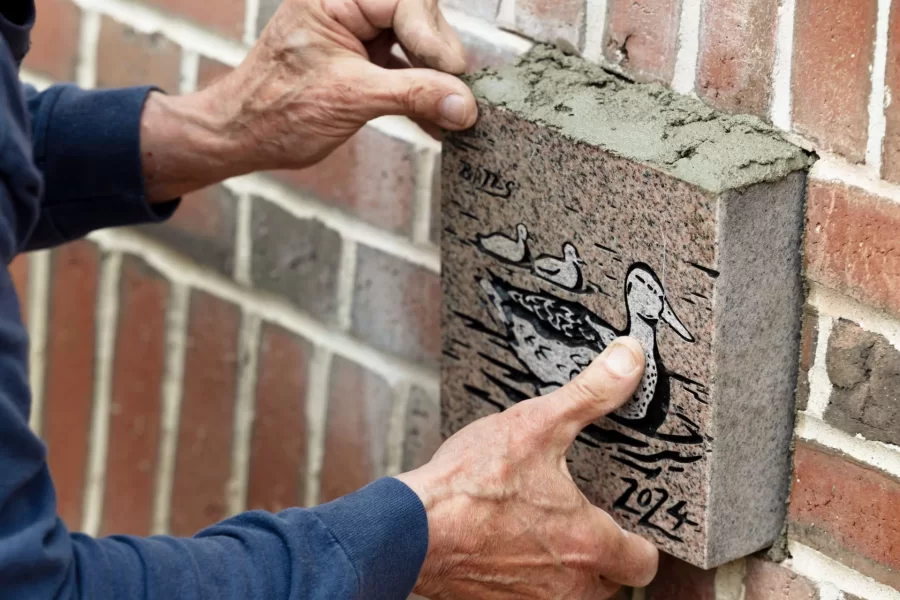
Until now, no stone depicts any kind of pastoral or natural scene. And that’s right in Hawkins’ wheelhouse.
“I always tend to focus on nature. I’m drawn to nature,” says Hawkins, who will head to San Francisco to work as a designer at Pottery Barn Kids after graduation. “I did my whole senior thesis on the forest fires in Idaho,” capturing the cycle of fire and regrowth in her oil paintings. “It is an amazing cycle that captivates me every year.”
Ducks begetting ducklings is another kind of cycle, and another way to feel hopeful, she says — “hope for our class, because our class has gone through a lot.”
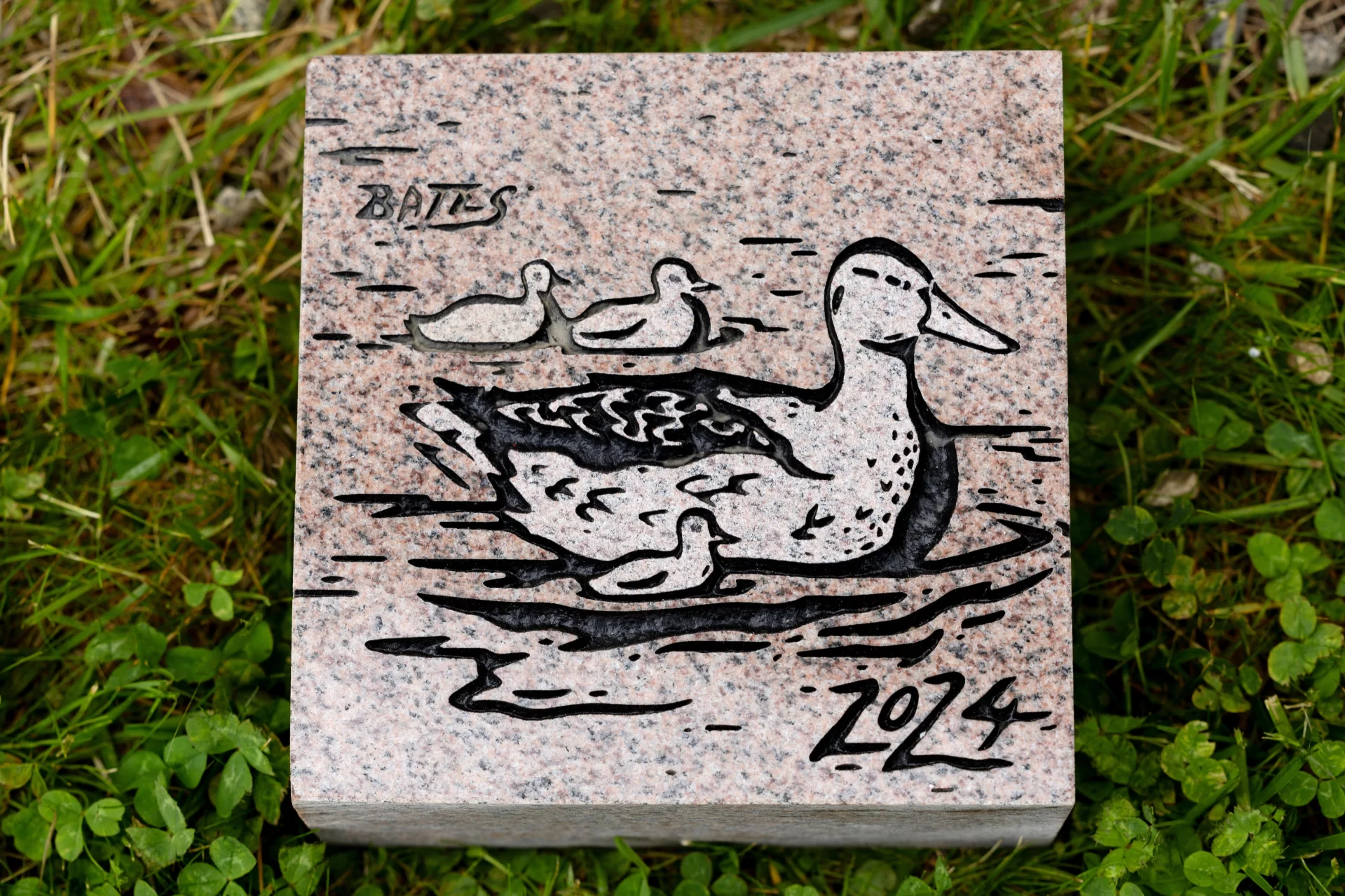
And with so much going on in the world right now, “I thought this was something everyone could relate to and enjoy in some way. I’ve always wanted to design the ivy stone and I’m thrilled that I get to have my artwork up here forever.”
